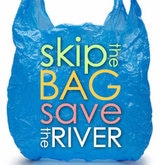Worldwide, turtles are in serious trouble. They are among the world’s most endangered vertebrates, with about half of their more than 300 species threatened with extinction. In Australia, six of our 28 freshwater turtle species are listed as threatened with research suggesting that other turtle species may soon be listed as threatened. The plight of the planet's turtles has never been greater.
The causes worldwide are varied and multiple involving illegal poaching of animals and eggs, the introduction of new diseases, pollution of our oceans and waterways with plastics and heavy metals, feral predators, changing weather patterns and reduced rainfall due to climate change, loss of habitat and, in WA, a falling water table.
Australia’s turtles, though better protected than those in many countries, are not free from hazards – in fact, the signs are that introduced predators, drought and the new threat of climate change add up to an uncertain future for Australia’s unique turtle species.
Humans are the problem, and must therefore be the solution. It is up to us to prevent the loss of these remarkable, unique jewels of evolution. Mankind is responsible for all the problems besetting not just turtles but all wildlife.
The causes worldwide are varied and multiple involving illegal poaching of animals and eggs, the introduction of new diseases, pollution of our oceans and waterways with plastics and heavy metals, feral predators, changing weather patterns and reduced rainfall due to climate change, loss of habitat and, in WA, a falling water table.
Australia’s turtles, though better protected than those in many countries, are not free from hazards – in fact, the signs are that introduced predators, drought and the new threat of climate change add up to an uncertain future for Australia’s unique turtle species.
Humans are the problem, and must therefore be the solution. It is up to us to prevent the loss of these remarkable, unique jewels of evolution. Mankind is responsible for all the problems besetting not just turtles but all wildlife.
MisinformationMisinformation is created by official press releases. This misinformation is then perpetrated when it is repeated within the media, all levels government and the community at large. Public perception, created by prevailing government attitudes – problems besetting species deemed to be common aren’t considered to be important. However, as little as 80 years ago Bilbies were common but are now endangered. Today they can only be seen in captive or conservation situations.
Turtles are great survivors. Yes, under the natural conditions which prevailed prior to white settlement, they would have had few problems surviving. Dying turtles are “just nature taking its course”. However, the following are not due to “nature”..... - lake pollution from run-off and drainage - barriers to traditional migration routes - roads, curbs, cars and peak hour traffic - dropping water table Turtles have evolved a remarkable armoured shell that has remained relatively unchanged through evolution, and while other vertebrate species have evolved and become extinct, the basic body form of turtles has remained an obvious testament to their success and their ability to survive millions of years of natural selection. However, the previously successful survival adaptations of turtles are no match for motor vehicles and the loss of traditional migration routes along with the other problems caused by urban development. Habitat LossSince European settlement, 80% of the lakes and wetlands on the coastal plain have been lost with the remaining 20% under pressure, or at risk. Vacant land around the metropolitan area often contains wetlands which are vital for the health of our waterways; they are Nature’s filtration system and habitat to numerous life forms including turtles. By draining wetlands and turning them into deep drains, the water table is again lowered. It is important that the 20% of wetlands remaining are protected and retained.
Domestic predatorsMany of the trauma cases admitted into care have been the victims of dog attack. Turtles’ shells, even those of adults, are not impervious to predators. Dog attacks result in puncture wounds which pierce both the top and bottom shells, invariably penetrating the lungs and other vital organs leaving the animal to die a slow death by drowning (punctured lungs) or infection and/or organ failure.
Dogs are required to be on a leash when in the metropolitan area but many owners, believing their dog to be harmless, flout this rule. Dogs cannot resist attacking reptiles; it’s in their nature. However, owners can prevent their dogs from attacking by keeping them on a leash and under control. An unleashed dog is not under control. Quite apart from the risk to turtles and bobtail skinks there is also a considerable risk to any dog allowed off-leash in turtle habitat which is also Tiger Snake habitat due to the availability of plentiful food sources such as rodents and frogs in lakeside and wetland environments. Eggs and juvenile mortalityResearch has shown that most turtle eggs, which nesting females bury in shallow sand or soil, are dug out and eaten by predators – mainly introduced species, such as dogs and foxes although in the Perth metropolitan Ravens* are the main predators, raiding nests already dug up by other predators such as foxes and dogs. Ravens also eat hatchlings making the perilous journey from nest to water a process which once would have been part of natural selection. However, there are now inordinate numbers of Ravens in the Perth metro area due to the prevalence of an abundant food source from human litter/waste. The balance of nature has again been weighted against turtles. This has resulted in a decrease in eggs and young whilst adult mortality is increasing. Without intervention, turtle populations will continue on this downward spiral.
|
Water pollutionDon’t let your celebration be the cause of wildlife deaths. Helium balloon releases are a popular way of celebrating all sorts of occasions. These balloons as well as ordinary rubber balloons and plastic bags don’t disappear; they do come back to earth ending up in the environment and, more often than not, in the sea and waterways where they cause countless deaths when ingested by seabirds and marine animals which mistake them for fish or jelly fish.
Dropping water table
Perth relies heavily on its underground aquifers for more and more water as Perth’s population continues to grow rapidly with 60% of Perth’s water drawn from the Gnangara aquifer. 74% of WA’s population lives on the Perth coastal plain: that’s 1.8 million people.
Some households, 167,000 or more, have domestic bores for garden use. As well, local government councils have their own bores for watering reserves and parks. Golf courses and swimming pools account for yet more water consumption.The current state of the Perth Coastal Plain wetlands is a reflection of the water table.The drying out of the lakes, along with run-off is causing lakes to become toxic. Inability to migrateBefore white settlement, turtles would have been able to freely migrate between lakes and wetlands in times of need. Not only have many of the lakes and wetlands been filled in for development but barriers to traditional migration routes have been created by roads, freeways and fenced properties. Animals migrating now are at risk of injury or death from motor vehicles, and dog attack when they become trapped within fenced properties.
Out of sight, out of mindWe have little idea of the conservation status or population trends of many of our turtle species. Spending most of their time on the bottom of rivers and lakes, freshwater turtles are usually out of the public eye, and they are rarely included in long-term monitoring programs. Turtles are only seen when they’re in trouble.
|






